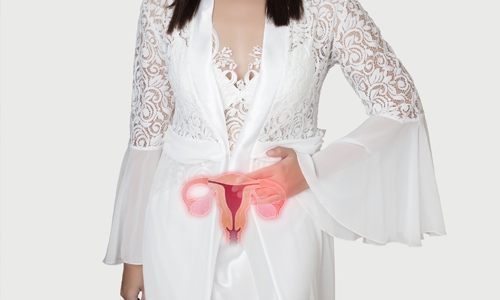
For women who have not yet reached menopause, menstrual pain is not something that should be overlooked. If menstrual pain becomes excessive or chronic, it may be a sign of endometriosis. Understanding this condition will help you to know what to do.
Understanding Endometriosis
Lining the inside of the uterus is a tissue called the endometrium, which is shed each month during menstruation. Sometimes, though, these endometrium cells can end up in the wrong place, including within the muscular wall of the uterus, the peritoneum (a thin membrane surrounding the abdominal cavity), or other organs like the ovaries or bladder. When this occurs, the condition is known as endometriosis. While the tissue is in the wrong place, it continues to function in the same way at the end of the menstrual cycle, breaking apart and bleeding, resulting in blood spots that have a dark red color that almost looks like chocolate.
Causes
The most common cause of endometriosis is retrograde menstruation. Menstrual blood containing endometrial cells flows back through the fallopian tubes and into the pelvic cavity instead of out of the body, becoming implanted in the uterus or other organs. The most common places where endometriosis might develop are the pelvic floor, ovaries, fallopian tubes, peritoneum, outer surface of the uterus, or the cervix.
Where it Can Occur
Areas where endometriosis is commonly found include:
- The ovaries, in which case they are commonly called chocolate cysts. These are caused by endometrial cells flowing back via menstrual flows into the ovaries. They look like fluid-filled cysts that contain a liquid with appearance of chocolate. Each month, the cyst grows as the endometrial cells regenerate, which can occur quickly or slowly dependent on its condition. As it grows, the membrane generally becomes thicker, as well.
- Within the muscular wall of the uterus. This occurs when the endometrium cells grow into the muscular wall of the uterus, which causes fibrosis or lumps in the uterine muscles. This condition is known as adenomyosis. There are two types of adenomyosis: focal, in which the condition is localized, and diffuse, in which the condition is distributed across the uterus.
Other than that, common locations where endometriosis can develop include the ligaments that support the uterus (uterosacral ligaments) and the space between the uterus and the bladder (anterior cul-de-sac).
Signs and Symptoms
Symptoms that may indicate the condition include:
- Painful and prolonged menstrual periods
- Abnormal or missing menstrual periods
- Pain, especially excessive menstrual cramps that may be felt in the abdomen or lower back
- Abdominal pain or painful bowel movements
- Pain during or after sex
- Infertility
Diagnosis
Diagnosis of endometriosis may be based on:
- An evaluation of the patient’s medical history by an obstetrician-gynecologist, including history of abdominal pain, menstrual pain, and pregnancy.
- Physical examination and/or laboratory investigation
- Ultrasound examination, which helps the doctor to clearly see the lesions
- Magnetic resonance imaging (MRI), which can be used if other methods are not able to confirm diagnosis
Treatment
Treatment of endometriosis depends on the symptoms and severity of the individual patient, including:
- Medication such as non-steroidal anti-inflammatory painkillers (e.g., ibuprofen) to reduce menstrual and abdominal pain
- Hormone Therapy Various forms of birth control, including oral contraceptives, contraceptive injections, and hormonal rings, can be used to reduce heavy menstrual bleeding or cramps. However, the patient cannot become pregnant if this treatment is used.
- Surgery Laparoscopic surgery can be used to remove endometrial growths, which helps reduce pain and reduce the chance for developing scarring after surgery. One technique is known as minilaparotomy myomectomy, which only requires an incision of 6 cm or less. Alternatively, an open abdominal myomectomy can be performed.
If the patient has a large amount of fibrosis or previous surgery has revealed that it was a chocolate cyst, laparoscopic surgery would be the more appropriate choice. Fibrosis is challenging to treat, and repeated incisions can result in scarring, infection, or inflammation. Therefore, limiting the number of incisions during surgery will reduce the risk for patients. Furthermore, the chance for scarring and fibrosis is less for laparoscopic surgery as compared to open abdominal surgery.
Chocolate Cysts and Pregnancy
Many women with chocolate cysts who wish to have children are still able to conceive naturally. And, in fact, the symptoms from chocolate cysts may improve during pregnancy, due to the reduction of sex hormones that occurs during the 9 months of pregnancy and the 3 to 6 months that follow delivery. Chocolate cysts not filled with menstrual fluids gradually shrink and disappear on their own. However, depending on various factors and individual hormone levels, chocolate cysts may reoccur. One key risk factor is a family history of endometriosis. The daughter of a mother with the condition has a 3- to 7-times greater risk of developing endometriosis. Therefore, annual checkups are important, and any abnormal symptoms should be examined by a doctor as soon as possible.